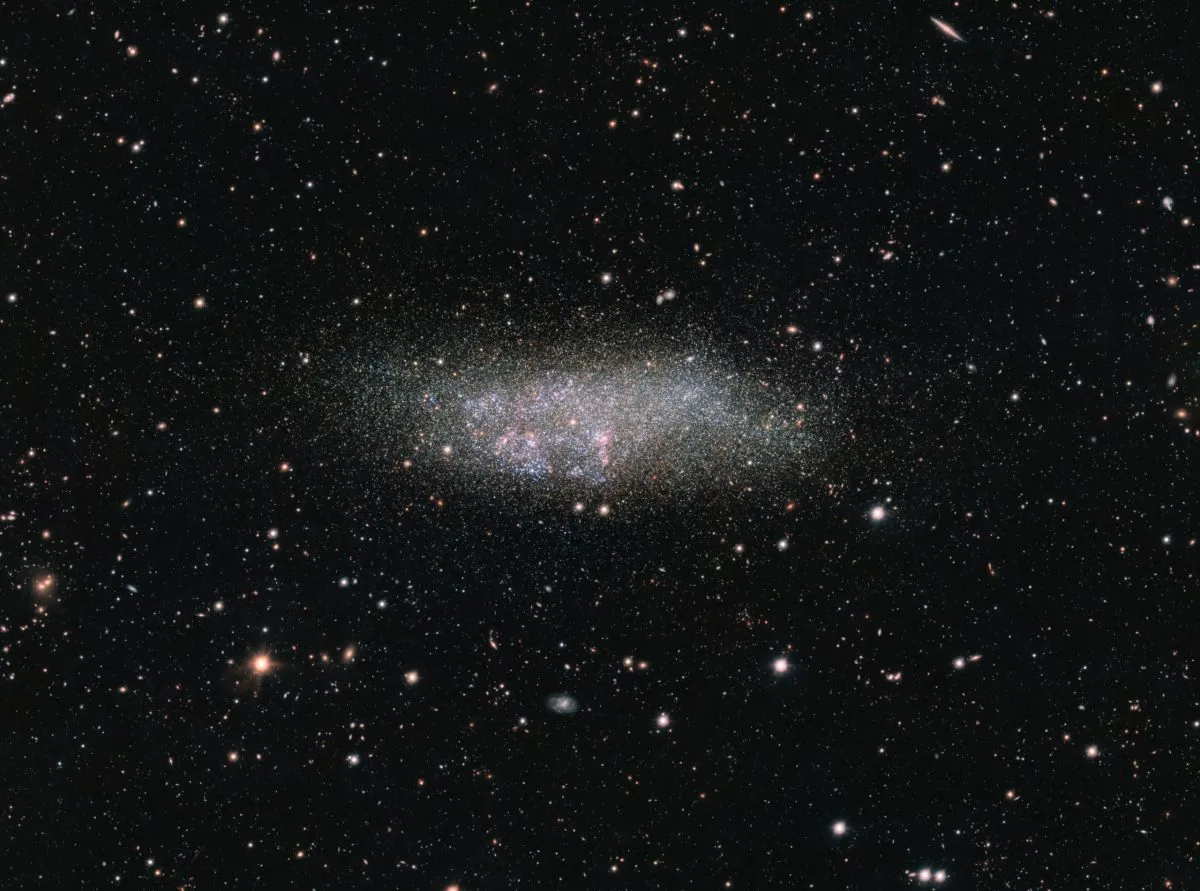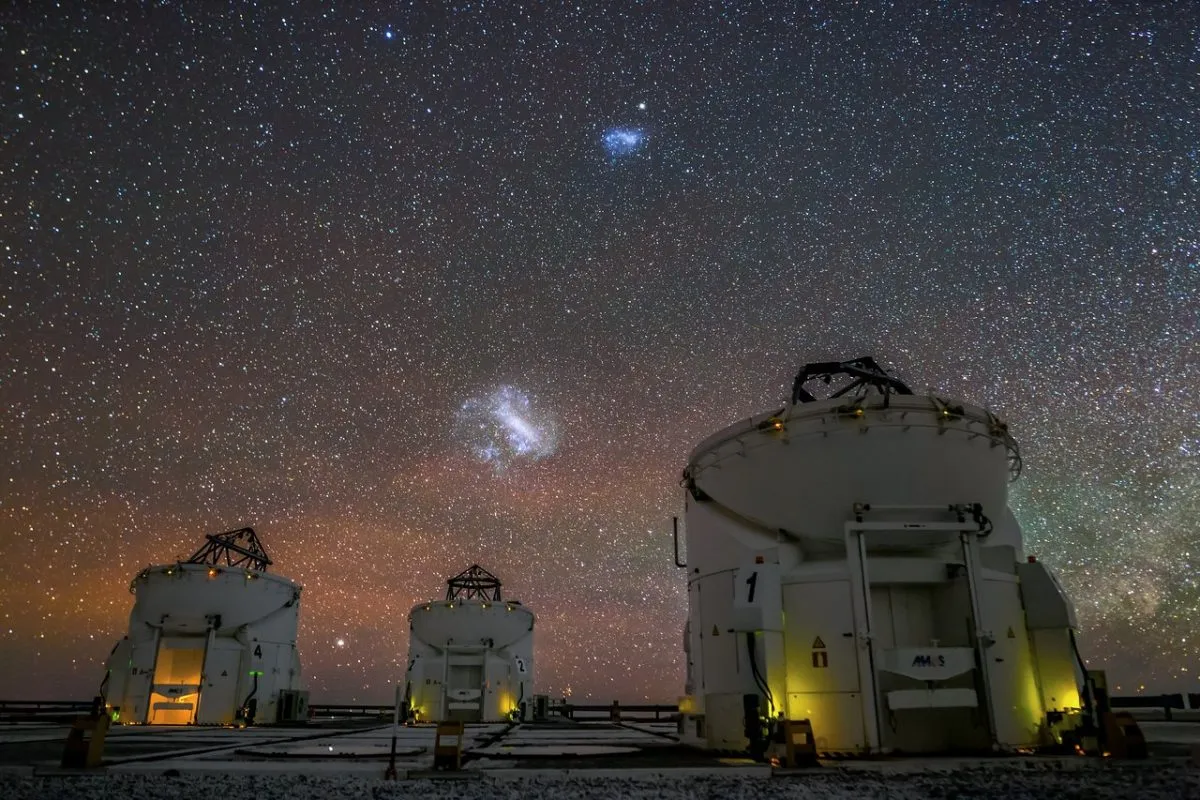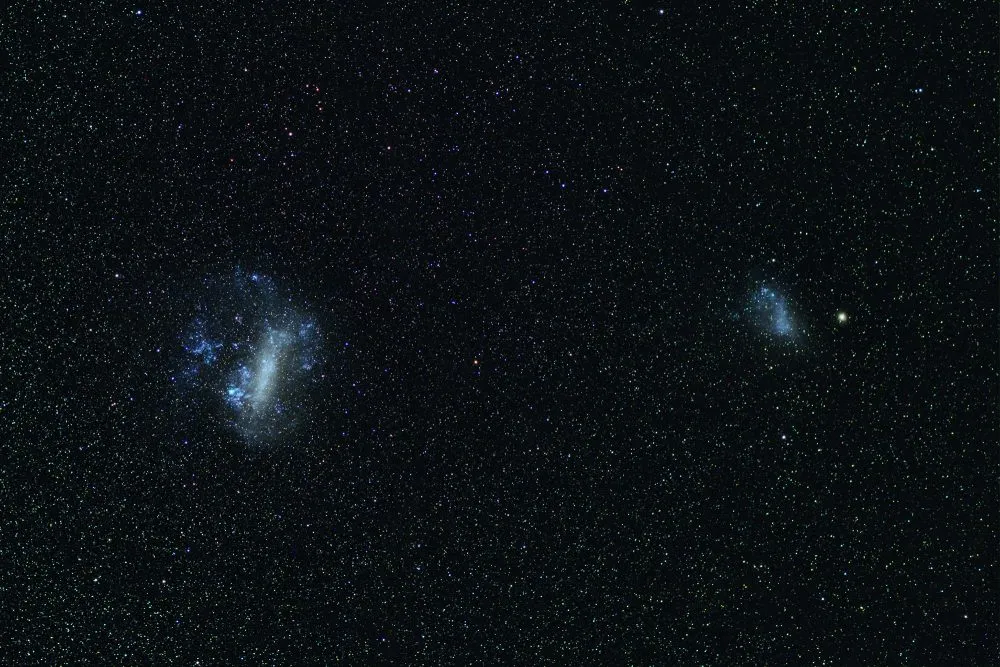The Milky Way is not alone in the Universe. Our Galaxy and its neighbour the Andromeda Galaxy are locked together by gravity. Caught along with them are a host of 30-50 smaller galaxies, among them M33 in Triangulum and the Magellanic Clouds. Together, they make up the Local Group.
The term ‘Local Group’ was introduced by Edwin Hubble in 1936 while he was measuring the distances to extragalactic objects.
Hubble was able to settled the Great Debate of 1920 with his observations of the Andromeda Galaxy, and subsequently realised that several of the galactic objects he had catalogued were so close to the Milky Way that they must be affected by its gravitational pull.
By that time it was already known that most galaxies are found in either groups or their larger cousins, clusters, and so Hubble suggested that these objects were all part of our Galaxy’s own group.

Over the years astronomers have found more nearby dwarf galaxies, upping the number in the Local Group to several dozen.
The exact population is still a matter of some contention: in order to be part of the group, a galaxy needs to be gravitationally bound to the other members, something that can be hard to work out.
Most of the galaxies in the Local Group are satellites of either the Milky Way or the Andromeda Galaxy.
There are a few others that are not, such as the Aquarius and Phoenix Dwarf Galaxies, but we know that they must be part of the group as they are too close not to be affected by the combined gravity of the two large spirals.
The problem comes for galaxies that are on the edge of the group’s gravitational influence.
Calculating distances on these huge scales is extremely difficult using the usual techniques of resolving individual stars visually and calculating redshift with spectroscopy.

In several cases a galaxy has at first appeared to be part of the Local Group, only for a more precise distance measurement to place it in a nearby group. This happened with irregular galaxy UGCA 86.
Once proposed to be part of the Local Group, studies have placed it in the IC 342/Maffei Group, an adjacent congregation of galaxies within 10 million lightyears of our own.
Telling which galaxies are part of the Local Group will be a lot easier in a few billion years, however, as they are slowly being pulled together.
The largest two members of the group, Andromeda and the Milky Way, are heading towards a massive collision in about four billion years.

While this will be the most spectacular crash these two spirals have encountered, it won’t be the first.
The remains of dwarf galaxies that have been subsumed by Andromeda can be seen in our galactic companion, while a structure called the Virgo Stellar Stream is believed to be what’s left of a dwarf galaxy that is currently merging with the Milky Way.
When the largest members of the Local Group merge, they will form a massive elliptical galaxy.
What will happen to the smaller galaxies is a little more uncertain. Some will get consumed in the merger, others will continue to orbit as satellite galaxies and some may be thrown out of the system entirely.
How to observe the galaxies of the Local Group
A few objects in the Local Group are prime targets for observing and imaging. That said, the light from these galaxies is spread out and diffuse, meaning they can be a challenge to find and picking out detail is very tricky.
As with most deep-sky objects, it’s critical to observe from a very dark site. From good locations you may be able to see some of these four with the naked eye.
1
The Andromeda Galaxy, M31

Equipment Naked eye
The Milky Way appears as a band of stars across the sky as we look out through the plane of our Galaxy. The exact position of the band on the sky changes throughout the year, showing us different parts of the Galaxy.
2
The Large and Small Magellanic Clouds

EquipmentNaked eye, binoculars, telescope
Constellation Dorado/Mensa (LMC); Tucana (SMC)
This duo are only visible from the southern hemisphere. The LMC is an irregular galaxy, though a strong bar-like structure near the centre suggests it may once have been a spiral; the SMC is an irregular dwarf.
3
The Triangulum Galaxy, M33

EquipmentBinoculars, telescope
Constellation Triangulum
In April, the mag. +5.7 Triangulum Galaxy will appear low on the horizon in the early hours of the morning. It is most easily spotted with binoculars due to its low surface brightness.
Ezzy Pearson is BBC Sky at Night Magazine’s News Editor. This guide originally appeared in the April 2014 issue of BBC Sky at Night Magazine.

